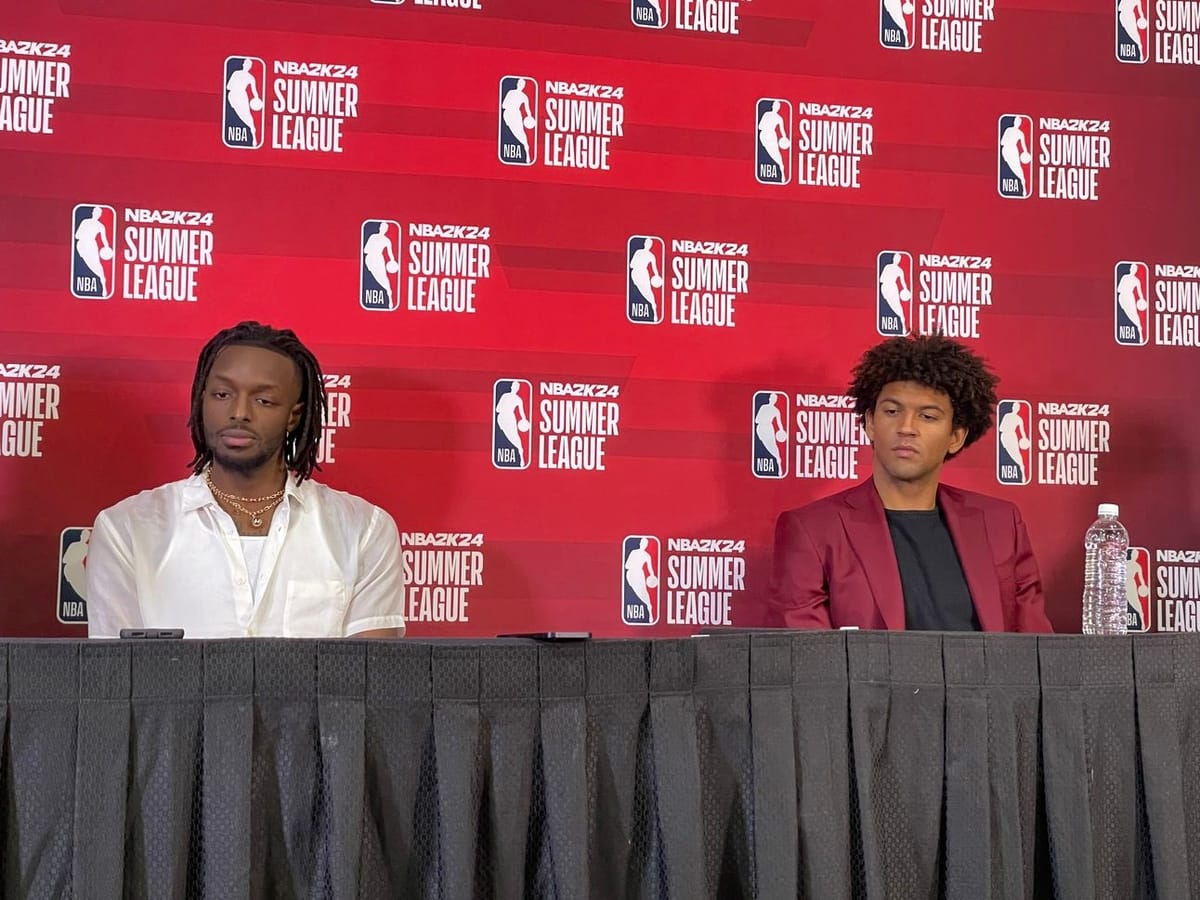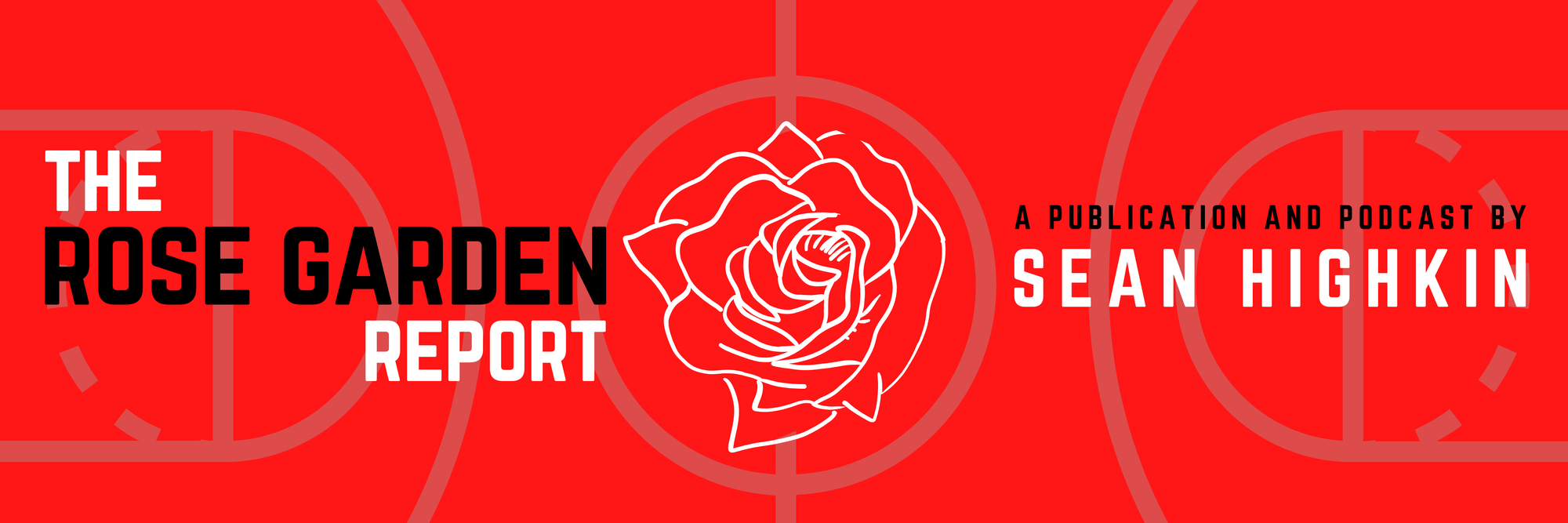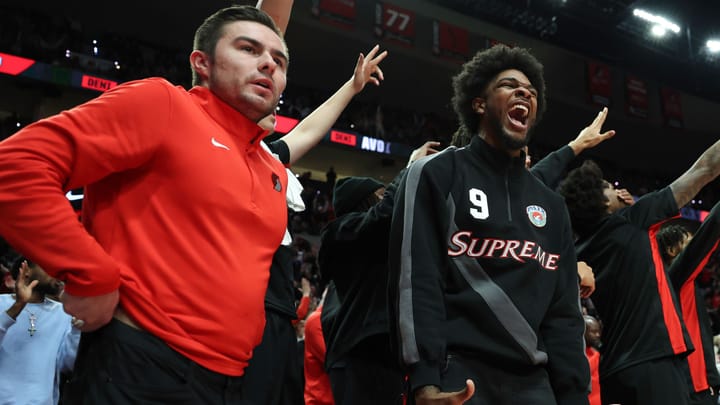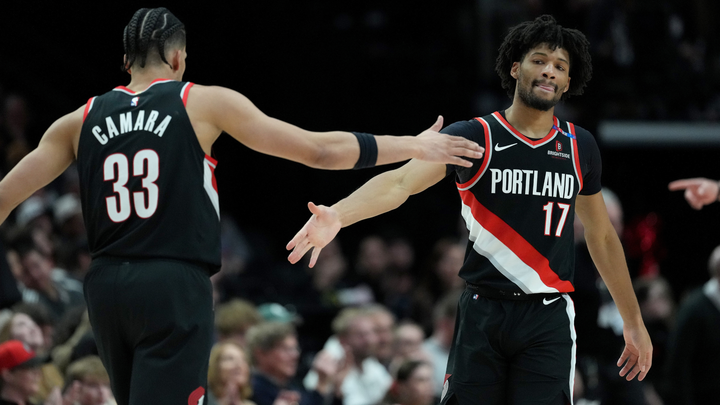As Damian Lillard Situation Looms, How Will Trail Blazers Complete Their Roster?
Outside of Lillard's status, Portland's roster has many of the same issues as last season.

As Joe Cronin continues to wait out Damian Lillard's trade market, the rest of the Trail Blazers' roster is also in a holding pattern.
Since taking three players on draft night, Portland has made no roster additions. Their only moves of free agency have been re-signing Jerami Grant to a five-year, $160 million deal and matching Dallas' three-year, $33 million offer sheet on Matisse Thybulle.
There is nothing new to report right now when it comes to Lillard. From my understanding, the Blazers still haven’t made any meaningful progress on trade discussions, either with Miami or any other team. At some point, that will change. It could be tomorrow, or closer to training camp, or all the way to the trade deadline. For now, Cronin is slow-playing it, which is the right approach when it comes to maximizing value on the most important trade he'll ever make. But it does complicate the rest of the offseason.
If Cronin is truly prepared to enter the season with Lillard on the roster, which we can only assume that he is based on his assertion that "if it takes months, it takes months," then the rest of the roster he's working with has many of the same size and depth issues as last season. Arguably even more so.
At the press conference Cronin gave during Summer League in Las Vegas on July 10, I asked him how he planned to go about filling out the rest of the roster while the uncertainty of Lillard's situation hung over everything.
"What I've really done for the most part since the trade request is press pause as far as transacting, because I really want to keep the flexibility with the back of our roster," he said. "We have some roster spots right now, certain deals we could be doing could be 3-for-1 things where we need some roster spots. But with that, you see guys going off the board. So we try to keep as much warm as we can with the free agents we're talking to, but they can only wait so long. So those are the ripple effects that make you press pause."
There were two overarching takeaways from that press conference. One is that Cronin isn't going to rush into a Lillard trade if he doesn't get a return he feels comfortable with. The other is that, whether Lillard is on the roster or not, the Blazers don't intend to tank or bottom out. That was part of the calculus behind re-signing Grant and Thybulle, and Cronin is adamant that Scoot Henderson and Shaedon Sharpe "are going to be win-now [players] very soon."
But if that truly is the goal, Cronin still has work to do in balancing out the roster.
As things stand on July 20, this is the Blazers' depth chart based on players currently under contract:
PG: Damian Lillard / Scoot Henderson / Keon Johnson
SG: Anfernee Simons / Shaedon Sharpe / Jeenathan Williams
SF: Matisse Thybulle / Nassir Little / Kris Murray / Rayan Rupert
PF: Jerami Grant / Jabari Walker / John Butler Jr. (two-way)
C: Jusuf Nurkic / Ibou Badji (two-way)
It's a similar makeup to last year's roster: a pretty talented and formidable starting five (just swap out Josh Hart for Thybulle) with very little in the way of proven depth at any position. It's even more lopsided, however: in Henderson, the Blazers have added yet another 6-foot-2 guard who, after being taken with the No. 3 overall pick with the idea that he'll be the post-Lillard face of the franchise, will need to play big minutes.
The lack of frontcourt depth that was an issue last year has only been exacerbated by letting backup center Drew Eubanks leave for Phoenix in free agency, as well as the decision to waive Trendon Watford ahead of his guarantee date last month, which was done to preserve roster flexibility. If something happens to Nurkic (a reasonable assumption, given his career injury history), the only other center on the roster currently is Ibou Badji, who is going into his second season on a two-way contract and has never played a minute in an NBA game.
The Blazers still have some tools to make moves if they want to. They have the full mid-level exception ($12.4 million) and biannual exception ($4.5 million) to use in free agency, and an $8.3 million trade exception left over from the Gary Payton II trade at the deadline. If they need to, they can work out an agreement with Chicago to amend or remove the protections on the pick they owe the Bulls that's lottery-protected through 2028, which would free up future draft picks to use in a trade. Anfernee Simons should still have some value around the league if they shopped him, which would make sense to do if they want to clear the runway for Henderson and Sharpe to be the long-term starting backcourt.
There are things they could do in addition to whatever happens with Lillard. The question becomes, will they?
"Our goal wasn't to be super-active directly in free agency," Cronin said at the Las Vegas press conference. "That wasn't a market we wanted to get heavy into. There were some players we were talking to and still are that may make sense. But for us, the goal to improve has always been via trade. We're continuing to work those deals."
As of now, Portland has 13 players under contract, not counting two-way contracts for Badji and John Butler Jr. Jeenathan Williams' salary is fully non-guaranteed if he's waived by Aug. 1. Cronin has indicated that he wants to keep several roster spots open in case he needs to take multiple players back in a lopsided trade (wonder what trade he's talking about there). Teams are required to carry 14 players once the regular season starts, so if the Lillard trade isn't done by then, he won't be able to avoid signing at least one more player just to meet league minimum roster requirements.
The current roster makeup also provides some clues into what the Blazers are actually looking for in a potential Lillard trade package. Here's what people are missing in the national discussion of Miami's underwhelming package: Portland's lack of interest in taking back Tyler Herro is not a reflection of his quality as a player, it's a matter of positional redundancy. If there was a player on offer with equivalent talent level to Herro who was a 6-foot-8 wing, Lillard might already be a member of the Heat.
The Blazers are already paying Simons $77.6 million over the next three years in addition to wanting to build around Henderson and Sharpe; another defensively challenged score-first guard on a big salary does nothing for them, which is why no Heat deal can happen without a third or fourth team involved. The problem is that it doesn't appear at present time as though any team is willing to give up real assets, either in good draft picks (emphasis on "good") or players Portland wants, to take on Herro. It's up to Pat Riley to find that team if he wants to get something done.
Until the Lillard situation is resolved, the Blazers' roster is likely going to remain in this incomplete state. If he isn't traded by opening night, Portland will start the season once again with a lopsided roster and no long-term direction. You can make the argument that they won't be doing much winning this season regardless of whether Lillard is there or not, so it's better to wait and get that trade right than to take a lesser return just for the sake of doing something and set back the long-term future they hope to build once Lillard is gone.
That's the balance Cronin has to strike between now and whenever this is settled. The only difference is that going into this season, Lillard's heir apparent is now in the fold.




Comments ()